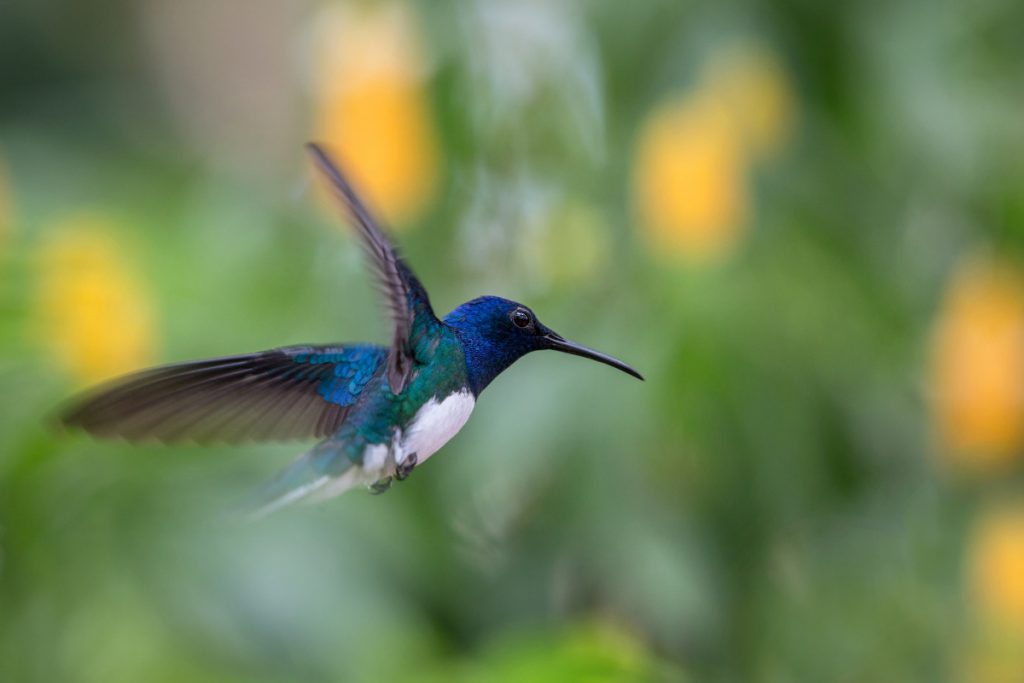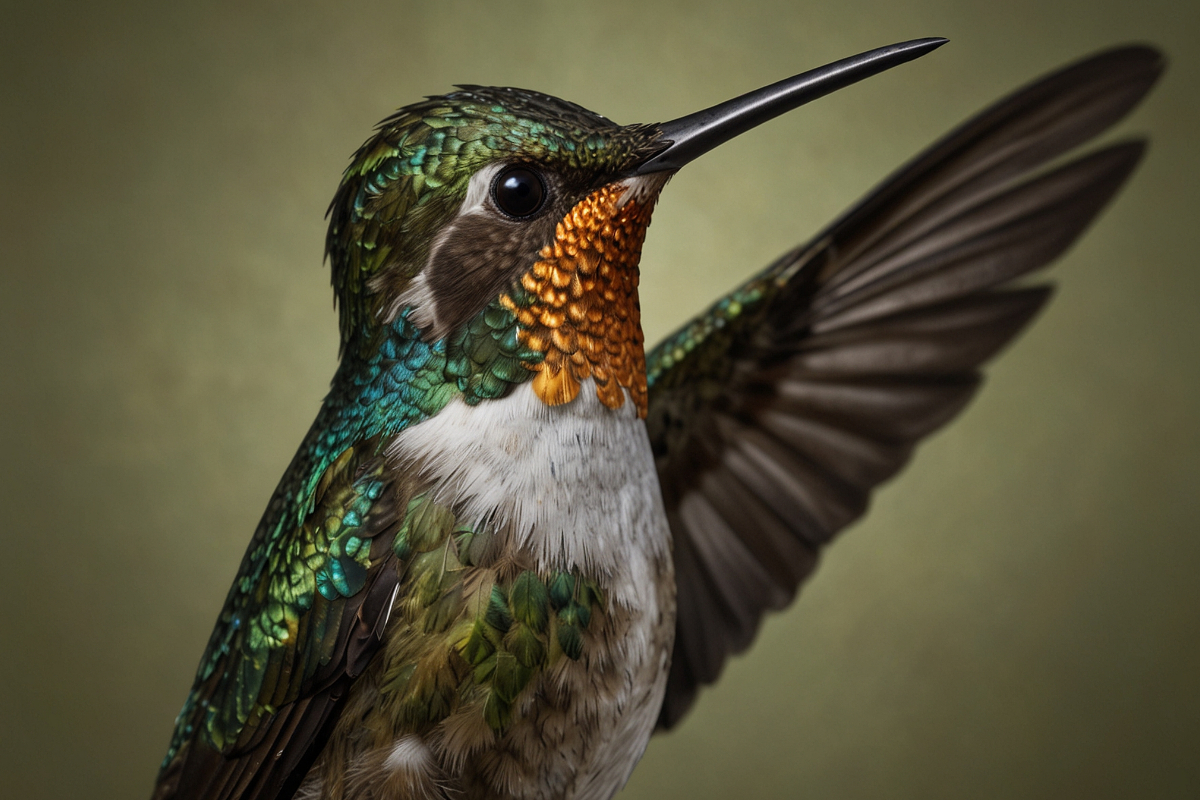If you suspect a hummingbird has an injured wing, look for signs such as a drooping or asymmetrical wing, inability to fly or maintain altitude, difficulty perching, visible damage to the wing, favouring one side of the body, and trouble hovering while feeding.
These indicators suggest the hummingbird needs professional care from a licensed wildlife rehabilitator to have the best chance of recovery and release back into the wild.
In this blog post, we will:
- Discuss the key signs that indicate a hummingbird has a wing injury.
- Explain what to do if you find a hummingbird with a suspected wing injury.
- Emphasize the importance of seeking help from a licensed wildlife rehabilitator.
How can you tell if a hummingbird has an injured wing?
A hummingbird with an injured wing may exhibit a drooping or asymmetrical wing posture, struggle to fly or maintain altitude, have difficulty perching, show visible signs of wing damage, favour one side of its body, and be unable to hover properly while feeding.
If you observe any of these signs, it’s crucial to seek help from a licensed wildlife rehabilitator to ensure the bird receives the care it needs.
1. Drooping or Asymmetrical Wing
One of the most noticeable signs of a wing injury in hummingbirds is a drooping or asymmetrical wing. If one wing hangs lower than the other or appears misaligned, it’s a strong indication that the bird has suffered an injury. The severity of the droop may vary depending on the extent of the damage.
2. Inability to Fly or Maintain Altitude
Hummingbirds are renowned for their incredible flying abilities, so if you notice one struggling to take off or maintain altitude, it’s a clear sign that something is wrong. An injured hummingbird may attempt to fly but fail to lift off, or it may manage a short, laboured flight before falling to the ground.
3. Difficulty Perching
Hummingbirds with wing injuries often have trouble perching on feeders or branches. If you see a hummingbird repeatedly falling off its perch or struggling to maintain balance, it could be due to a wing injury. This difficulty may be accompanied by other signs of distress, such as panting or appearing exhausted.
4. Visible Wing Damage
In some cases, you may be able to spot visible damage to a hummingbird’s wing, such as blood, swelling, or missing feathers. If you have the opportunity to observe the bird closely, look for any obvious signs of trauma or injury to the wing area. However, be cautious not to cause the bird further stress or harm.
5. Favoring One Side
Hummingbirds with wing injuries may hold their wings unevenly or favour one side of their body while resting. If you notice a hummingbird consistently leaning to one side or holding its wings at different angles, it could indicate an underlying wing injury. This behaviour may be accompanied by other signs of discomfort or distress.
6. Inability to Hover Normally
Hummingbirds are known for their ability to hover effortlessly while feeding from flowers or feeders. However, a hummingbird with an injured wing may struggle to hover normally. It may attempt to perch and eat instead or have difficulty maintaining its position in the air. If you observe a hummingbird having trouble hovering or resorting to unusual feeding behaviours, it’s a sign that the bird may have a wing injury.

What to Do If You Find an Injured Hummingbird
If you come across a hummingbird displaying any of the above signs, it’s essential to take action to help the bird. However, it’s crucial to remember that hummingbirds are delicate creatures, and attempting to care for them without proper training and permits can be illegal and potentially harmful.
The best course of action is to contact a licensed wildlife rehabilitator in your area. These professionals have the knowledge, experience, and facilities necessary to provide the specialized care that injured hummingbirds require. They can assess the bird’s condition, administer appropriate treatment, and work towards releasing the hummingbird back into the wild once it has recovered.
If you need to contain the injured hummingbird until a rehabilitator can take over, follow these steps:
- Gently place a soft cloth or towel over the bird to help calm it and prevent further injury.
- Carefully pick up the bird and place it in a small, ventilated box lined with a soft material like tissue paper or a clean cloth.
- Keep the box in a warm, quiet place away from pets and human activity until you can transfer the bird to a wildlife rehabilitator.
Remember, the goal is to minimize stress and prevent further harm to the hummingbird while ensuring it receives the expert care it needs to recover.
Conclusion
Hummingbirds are fascinating and beloved birds, and it’s essential to be aware of the signs of wing injuries to help them when they are in need. By familiarizing yourself with the indicators of a wing injury, such as drooping, difficulty flying, trouble perching, visible damage, favouring one side, and inability to hover normally, you can quickly identify a hummingbird that requires assistance.
If you suspect a hummingbird has an injured wing, remember to contact a licensed wildlife rehabilitator for proper care and treatment.
With prompt action and expert care, many injured hummingbirds can recover and return to their natural habitat, continuing to captivate and inspire bird lovers for years to come.
Related Post: The Hummingbird’s Wisdom: Life Lessons from Nature’s Tiniest Teachers.
